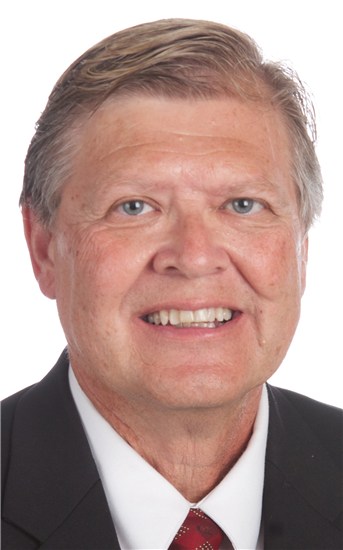By Peter G. Shaw-McMinn, OD
April 29, 2015
In polling first-year optometry students about their preferred future mode of practice, I find that most of them want to join an existing practice. However, manypractices are closing their doors because a suitable replacement OD cannot befound. Many ODs do not get the chance to enjoy life as fully because there is no one to cover the office when they go on vacation or take days off. There are so many benefits to taking in a partner.
1. Promoting the partner. If I say that I am the smartest optometrist in town, the words are meaningless; but if I say that my associate is, the statement will be accepted without serious question.
2. Customized supplies and printed material for patients. Increased patient volume and needs allows more money for supplies and printed material.
3. Private educational seminars. The partners can learn from each other’s expertise and experience. For example, the senior OD can teach how to recommend specific lens options and the junior OD can teach proper use of TPAs.
4. Unusual and diversified equipment. Since overhead per patient will be much lower, and patient volume higher, funds will be available for more equipment.
5. A laboratory. A finishing lab requires sufficient volume to make it worthwhile.
6. Services of a personnel director. Since more staff will be necessary to handle the increased patient volume, the headaches of managing staff may be delegated.
7. Public relations. The partners will probably be of different ages and interests. This fact will result in bringing in patient populations that neither alone could bring in. Also, there are multiple doctors available for screenings, service clubs, public service announcements and newspaper announcements.
8. Volume buying. Greater discounts as volume increases.
9. Additional specialized services. A group of optometrists are more likely to provide services such as glaucoma treatment, sports vision, computer vision, pediatrics, ortho-keratology, vision therapy and low vision.
10. Managed care contracts. Vision plans, insurance and governmental meddling result in overhead and personnel problems, which are complex. A group effort will be better able to deal with these changes. Managed care organizations will prefer groups, which can provide all facets of vision care to large numbers of patients.
11. Pay to Senior OD. The senior OD will pay more for an employee than he will pay for an associate. With the employee, he is paying for his services rendered in the practice; whereas, with the future partner, he is paying a lower salary and “goodwill” in the practice.
12. Larger knowledge pool. When problems arise, there are two heads to solve any one dilemma.
13. Senior OD has the opportunity of slowing down a little. The senior OD can work less days or hours, and still have the practice covered.
14. More free time. The partners have a chance to cover for each other in the event of weddings, family outings, funerals and other events.
15. More vacation time. They can have more vacation time without hurting the practice.
16. Security. They have the younger approach of a junior doctor to help jar loose old, antiquated ideas, and they have security in knowing the practice will go on to help the senior’s family should he die.
17. Each has a backup in case of accident or sickness. No one can plan for an accident or illness; when one occurs, the practice will be covered.
18. Vacations are covered in the office. In a solo practice, the OD loses money whenever they are out of the office. This is not necessarily true with a partner available to cover overhead expenses.
19. The partners can choose to have fewer working hours. Since chair cost is reduced, partners can work less hours and receive more pay than in solo practice.
20. There is a guaranteed sale of the practice. In the event of an untimely death, the partner will purchase the assets from the widow or widower.
21. The new OD will bring in new patients. The new OD travels in entirely different social circles and meets many people who become patients.
22. The new OD usually possesses some specialty skills. Ideally, the new OD will be interested in sub-specialty services, which automatically generate office income, even among existing patients.
23. The new OD is available to work evenings and weekends. The OD is anxious to build a patient base. This establishes office appointments more convenient to patients who cannot take off work to come in for an appointment.
24. The office will never have to close because of one doctor’s personal schedule. You can avoid having to close the office because of personnel problems, or commitments such as conventions, vacations, illness, disability, etc.
25. OD can earn their own income with absolutely no increase in overhead. Everything the associate needs for the practice is sitting idle in the office when the senior OD leaves for the day.
26. Associate has a stake in the practice. A salaried employee optometrist will not feel obligated to do a good job for either the older OD or the patient since they are paid a straight salary. A future partner, however, is on an incentive plan (profit sharing), and is also building their future if they intend to buy the practice.
In view of all these advantages, it seems we should all strive to develop a group practice. My first associate OD happened to retire in my community, and wanted to work a couple days a week. I also added a vision therapy resident who wanted to keep his general optometric skills sharp. After discovering the advantages of having an associate, I have enjoyed the benefits of 35 years of group practice.
It has allowed me to thrive, despite being out of the office for four months due to a severe car accident. Group practice has allowed me to teach at Marshall B. Ketchum University for 35 years and lecture throughout the US, as well as in Mexico, the Dominican Republic, Canada, the United Kingdom and Malaysia. It provided a mechanism to bring my daughter and son into the practice as partner ODs.
Think about helping out a young OD by taking them into your practice. And, while you’re at it, take the time to improve your golf game or travel the world!
What do you think are the advantages of adding an associate OD? How do you make the most of the associates you add to your practice?
Peter G. Shaw-McMinn, OD, is an assistant professor of Clinical Studies at the Southern California College of Optometry. He is the senior partner of Sun City Vision Center, a group practice including five optometrists. Dr. Shaw-McMinn has served as chairman of the AOA Practice Management Committee and the Association of Practice Management Educators. He was the appointed Benedict professor in Practice Management for the University of Houston College of Optometry for 2001-2002. To contact: shawmc1@me.com.



























